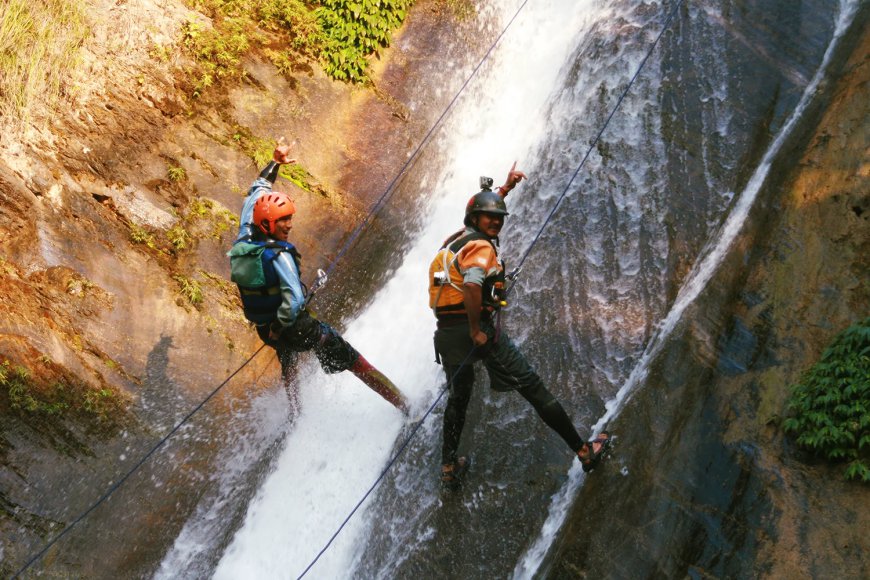Understanding the Risk of Canyoning in Nepal
Canyoning in Nepal is an adventure that pulls you into the heart of nature’s wild beauty. Imagine standing at the edge of a waterfall, the roar of the water pounding in your ears as you prepare to descend.
Canyoning in Nepal is an adventure that pulls you into the heart of nature’s wild beauty. Imagine standing at the edge of a waterfall, the roar of the water pounding in your ears as you prepare to descend. The cliffs rise steeply on either side, and the spray from the falls cools your face. It’s a mix of excitement and fear, a test of both courage and skill. But as thrilling as canyoning is, it’s important to remember that it comes with real risks.
1. The Power of Water
Water is one of nature’s most powerful forces, and when you’re canyoning, you’re right in the middle of it. The waterfalls in Nepal are breathtaking, but they can also be dangerous. On my first trip, I was caught off guard by the strength of the current as I descended a waterfall. It’s easy to underestimate how powerful the water can be, but one slip can lead to a serious accident. Always respect the water, and never take its power lightly.
2. Slippery Surfaces
The rocks in a canyon are often wet and slippery, making it easy to lose your footing. I remember a moment when I almost lost my balance on a narrow ledge. My heart raced as I clung to the rock, realizing just how easily I could have fallen. Wearing proper shoes with good grip is crucial, but even with the right gear, you need to move carefully and deliberately.
3. Height and Exposure
Canyoning often involves descending steep cliffs and rappelling down waterfalls, which can be intimidating, especially if you’re afraid of heights. The feeling of being high above the ground, with nothing but a rope keeping you safe, can be overwhelming. During my first descent, I felt a wave of fear as I looked down into the canyon below. It’s important to be honest with yourself about your comfort level with heights and to trust your guides and equipment completely.
4. Unpredictable Weather
Nepal’s weather can change rapidly, especially in the mountains. A clear day can quickly turn stormy, making the conditions in a canyon much more dangerous. I was lucky on my first trip, but I’ve heard stories from others who were caught in sudden downpours that made the canyoning route almost impossible to navigate. Always check the weather forecast before heading out, and be prepared for the possibility of a change in conditions.
5. Physical Demands
Canyoning is physically demanding. It requires strength, balance, and endurance. I wasn’t fully prepared for how tired I would feel after hours of climbing, rappelling, and swimming. The physical exhaustion can affect your judgment and make it harder to stay safe. Make sure you’re in good shape before you go, and don’t push yourself beyond your limits.
6. The Importance of a Good Guide
Having a knowledgeable and experienced guide is essential when canyoning in Nepal. My guide was invaluable, not just for his technical skills, but for his understanding of the local environment and conditions. He knew when to push us forward and when to hold back, always putting our safety first. Make sure you choose a guide with a strong reputation and plenty of experience in the area.
Final Thoughts
Canyoning in Nepal is a thrilling activity that takes you through some of the country’s most picturesque and secluded areas. However, it is a risky undertaking. While the thrill of canyoning cannot be denied, it is critical to be aware of the dangers and prepare as much as possible.
To go canyoning, keep an open mind, be prepared for challenges, and respect nature’s strength. Understanding the hazards does not prevent you from going. Canyoning in Nepal can be one of the most gratifying adventures of your life if you prepare properly, go with a skilled guide, and have a healthy appreciation for the risks. But always remember that safety comes first, and sometimes that means knowing when to turn back.

